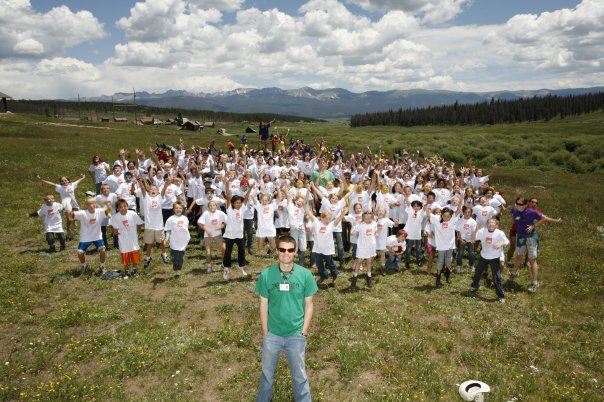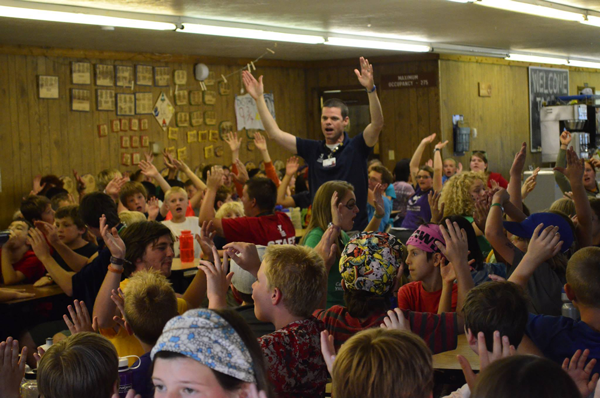A counselor-in-training program at summer camp, also known as CIT, valuable component of any summer camp. Not only do they offer young people an opportunity to develop leadership skills and gain experience in a camp environment, but they can also help to build a strong staff team in the future. While most companies have a clear delineation of those they serve and the staff that supports them, camps have to be intentional about how they bridge the gap between camper and counselor.
Marty Ferguson, a Sales Manager at Campminder, spent two years running the training program at YMCA Camp Chief Ouray, and then worked there for 11 years as Camp Director. Here are his suggestions for important elements and strategies to include in your CIT program.

Create Time for Bonding
One key element to a successful CIT program at summer camp is providing opportunities for the group to bond with each other. CITs are typically between the ages of 15 and 17 and are in a transitional stage of their lives. They are trying to figure out what kind of adult they want to be and may be torn between the fun of being a camper and the responsibility of being a counselor. Marty explains that a successful CIT program should give them a taste of both worlds, allowing them to have some camper experiences while also introducing them to the responsibilities of a counselor.
Creating bonding opportunities is an important part of achieving this balance. In Marty’s case, he took his CIT group to Rocky Mountain National Park for four days. This gave them a chance to get away from the distractions of camp and have meaningful conversations in a beautiful location.
When they returned to camp, the CITs were sent to learn how to teach different activities. They often said that they missed the times when they were together as a group, which was a teachable moment in itself. As Marty explains, staff members experience the same bonding and separation during staff training, so this prepares the CITs emotionally for what it will feel like to be on staff. They need to understand that a CIT summer is not just about hanging out with friends; it’s also about learning and growing.
Learn from Staff

Another valuable element of a CIT program is the opportunity to shadow staff. CITs can talk to the staff members who are leading different activities about their safety protocols, how they set things up, and other tasks that happen before the campers arrive. This gives them a better understanding of what it takes to be a counselor and helps them appreciate the effort that goes into preparing for camp.
It also gives them a chance to evaluate what they have learned as a group, discuss what went well, and identify areas for improvement. Often, CITs would say to Marty, “I’ve been doing archery at camp for years, but I never knew the counselors did so much to prepare.”
However, it’s important to ramp up responsibilities gradually. Some CITs may be overconfident and believe that their camper experiences have prepared them for a counselor role. Be intentional about how responsibilities are introduced to prevent burnout and ensure that CITs are prepared for the challenges they will face as staff members. As CITs are given more independence, it’s important to bring the group back together periodically to recharge their batteries and hear what others are learning.
Plan a CIT-led activity
Marty’s program at YMCA Camp Chief Ouray included one activity that was completely owned by the CITs. They planned it and ran it from start to finish, which provided them with a valuable leadership opportunity. It was also something they would remember and talk about for years to come. By giving CITs ownership over an activity, camp leaders can help them develop their leadership skills and gain confidence.
Encourage Evaluation in your Counselor-in-Training Program
Another important element of a counselor-in-training program at summer camp is to encourage evaluation and feedback. After shadowing staff members or helping with activities, CITs should have the opportunity to evaluate what went well and what could be improved. This allows them to learn from their experiences and make adjustments as needed. It also helps them develop critical thinking skills that will be valuable in future leadership roles.
Set Clear Boundaries
Marty emphasizes that it’s essential to be clear about boundaries from day one. While some CITs may be eager to step into the staff world, staff members should be firm about what is and isn’t allowed. During staff training, Marty ran a specific session with staff to ensure that everyone was on the same page about what is expected of CITs and how to appropriately interact with them.
Include Skills that Go Beyond Camp

Ultimately, the more valuable you make the CIT experience, the more likely they are to come back as staff members. However, it is important to balance this goal with an understanding that the counselor-in-training program at summer camp should not simply be a means to fill staff roles in future years. Marty recommends focusing on skills that are not specific to camp but are instead geared toward the developmental age of the CITs.
The Right Combination
A successful CIT program requires a combination of bonding opportunities, unique camp activities, a ramp-up to responsibilities, ownership over a specific activity, clarity about boundaries, and a focus on the developmental needs of the participants. By implementing these strategies, you can create a CIT program that benefits both the CITs and the camp as a whole. Whatever it is at your camp that connects with your mission or culture, give the CITs a way to feel that they are lucky to be there and that you are lucky to have them.
